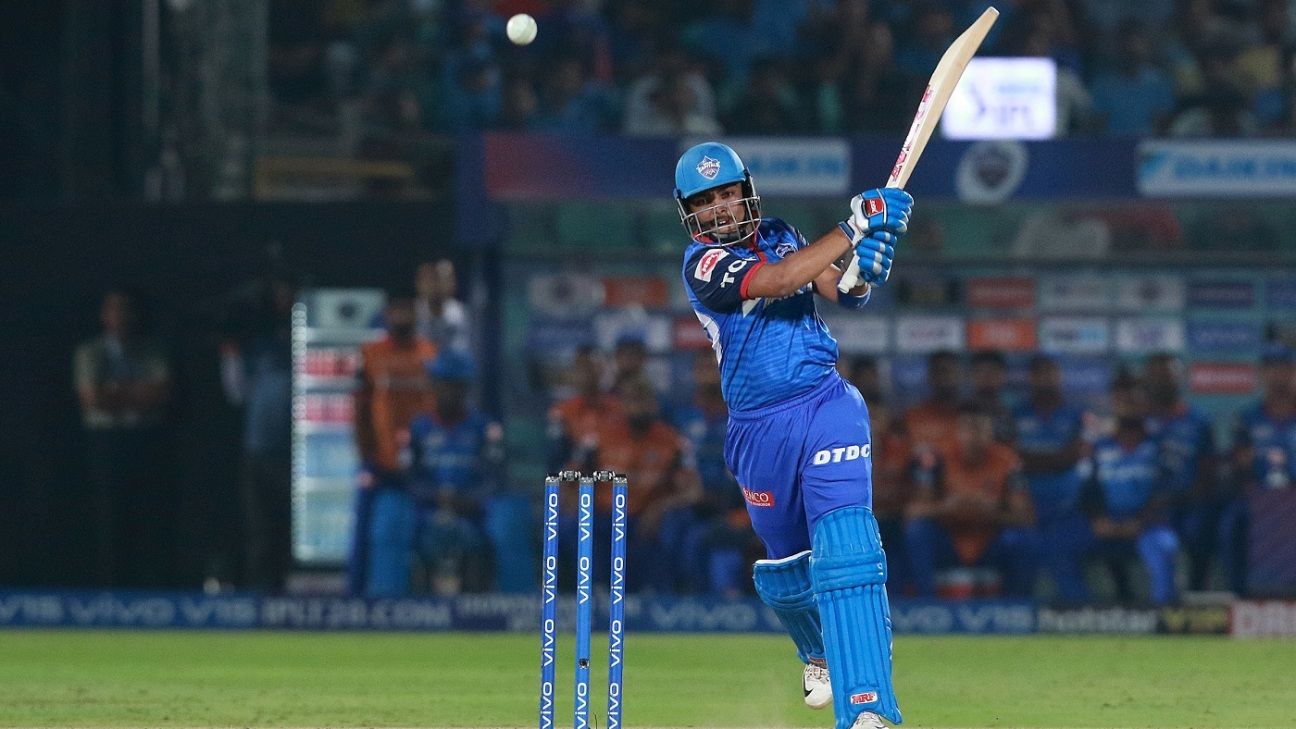
The closing stages of the Syed Mushtaq Ali Trophy's league phase were enlivened by a tight race for the Super League and two prominent names making a comeback, Prithvi Shaw and Bhuvneshwar Kumar. Sunday was to be the last day of the league stages for all five groups, but reschedules have meant there will be seven matches from Groups C, D and E played on Monday. The top two teams from each group will qualify for the Super League, to be followed by semi-finals and the final.
Shaw smacks half-century on comeback
Having served out his eight-month ban for consuming a banned substance, Shaw returned to action for Mumbai in the familiar environs of the Wankhede Stadium with 63 off 39 balls at the top of the order in a Group D match. Assam had to bear the brunt of a Mumbai side smarting from a shock defeat against Meghalaya in their last match.
Mumbai piled up 206 for 5 after being asked to bat, while Assam could muster only 123 for 8.
But while Aditya Tare, Shaw's opening partner, was the game's top-scorer, smashing 82 off 48, Shaw was the cynosure. It was his first knock at a representative level since the IPL Qualifier for Delhi Capitals against Chennai Super Kings on May 10.
He came through the test well, though Assam's bowling didn't pose the greatest challenge, hitting six fours and three sixes in his knock. Shaw will now need to build on a successful start to his comeback to challenge for a spot in the Indian team again. In his absence, Rohit Sharma and Mayank Agarwal have established themselves as unquestionably the first-choice openers in the Test team.
Bhuvneshwar makes a solid comeback
Injuries, and team dynamics, have meant Bhuvneshwar has slipped from being a three-format India player to one who is looked at primarily for limited-overs cricket. Even with the white ball, Deepak Chahar's emergence as a swing bowler of considerable skill has meant Bhuvneshwar's absence hasn't quite been an unfillable void.
Before the T20I series against Bangladesh, chief selector MSK Prasad had said, "Bhuvneshwar Kumar might come in the next series."
Bhuvneshwar took some strides towards an international comeback, making a steady if understated return to competitive cricket. He played his second match in three days for Uttar Pradesh, in Group B. His comeback game was against Manipur on November 15 in Thumba, where he took none for 13 in three overs. Against Kerala in Thiruvananthapuram on Sunday, he bowled his full quota of four overs and took 1 for 23.
Kerala made 119 for 8 in 20 overs, before Uttar Pradesh, set a revised target of 44 in seven overs, ended up on 42 for 4, losing by one run. That result had significant ramifications for who ended up qualifying.
Karnataka, Baroda, Tamil Nadu, Rajasthan, Mumbai, Haryana qualify
Karnataka, Baroda, Tamil Nadu and Rajasthan have already qualified for the Super League, with Groups A and B having completed all their matches.
Some matches remain in Group D, but Mumbai and Haryana have qualified from that group. Mumbai are on an impregnable 24 points. Haryana have 20, with a match against Meghalaya left. Even if they lose, there is no other team on 20 points. Puducherry are on 16 and can equal Haryana on points if they beat Madhya Pradesh, but Haryana had won their head-to-head match against Puducherry.
Both Karnataka and Baroda finished on 20 points in Group A, having five wins and one defeat each, and sailed through comfortably. The going was tighter in Group B. Tamil Nadu were the group leaders with 20 points, but Rajasthan, Vidarbha and Kerala all finished on 16 points each. They had all beaten each other once, which meant Rajasthan, with a net run-rate of 1.938, qualified ahead of Vidarbha (0.566) and Kerala (0.503).
Two rain-affected matches that were decided by a margin of just one run played a part in deciding the Group B table. Vidarbha had beaten Rajasthan by a single run on November 12 despite Chahar's heroics, and, on Sunday, Kerala beat Uttar Pradesh by the same margin. If Kerala hadn't won, there wouldn't have been a three-way tie and in that case, Vidarbha would have gone through by virtue of having won their head-to-head against Rajasthan.
Meanwhile, Rajasthan did all they could to qualify, destroying Tripura in a nine-wicket win. They first restricted Tripura to just 69 for 7 in 16 overs, and then smashed their way to 74 for 1 in five overs, ensuring their net run-rate would be high enough to take them through in case of a three-way tie - which is exactly what happened.
Group C currently has six out of eight teams on 16 points each, making the race very right. Two Group C games are still remaining. The winner of Maharashtra v Punjab will straightaway qualify, since they are two of the teams on 16 points. Railways, also on 16, will join in if they can beat Himachal Pradesh in the other game. Himachal have only eight points, though, so if they win, it could leave five teams on 16. Punjab have a net run-rate superior to all others, so if they lose to Maharashtra, they'll still be in position to qualify - should Railways lose. The team with the second-highest net run-rate right now is an unlikely one: Chandigarh. It will be quite a story if they qualify.
Jharkhand are on top of Group E, but both Delhi and Jammu & Kashmir are close behind, and the latter two have matches in hand. The next two teams are Gujarat and Odisha, who will also be in action on the final day, which makes Group E's scenario uncertain till the end.















 Phone: (800) 737. 6040
Phone: (800) 737. 6040 Fax: (800) 825 5558
Fax: (800) 825 5558 Website:
Website:  Email:
Email: 






